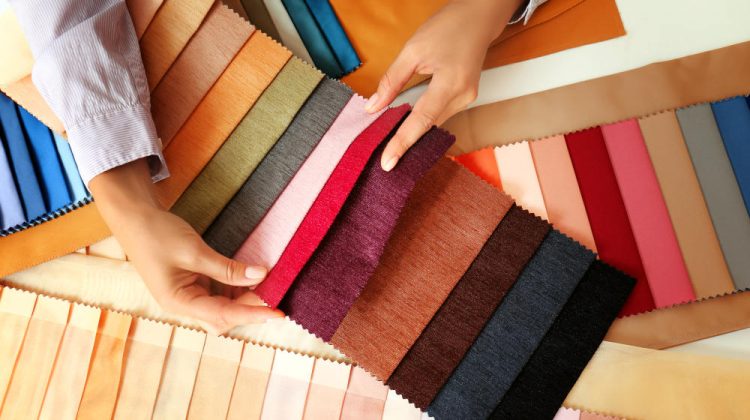Why Choosing The Right Fabric Matters
Performing at your best isn’t just about training hard and eating well; what you wear significantly impacts your performance. This is especially true when it comes to beating the heat. High-performance fabrics that focus on cooling and breathability can make a huge difference. But how do you stay cool without compromising on sustainability? Leveraging eco-friendly fabrics for activewear can help you stay comfortable while being kind to our planet. Choosing eco-fabrics lets you join a more significant movement that lowers your carbon footprint and encourages sustainable fashion industry practices. This may be very fulfilling and inspiring for individuals who are dedicated to their own and the planet’s well-being.
Eco-Friendly Cooling Technologies
Eco-friendly cooling technologies in fabrics are transforming the textile industry by offering sustainable solutions for comfort in warm climates. These innovative textiles include materials with moisture-wicking properties, enhanced breathability, and advanced thermal regulation. Naturally wicking away sweat, materials like Tencel, bamboo, and organic cotton keep the body dry and cool. Additionally, some textiles are treated with phase-change materials that absorb and release heat, maintaining an optimal temperature. These eco-friendly cooling fabrics provide comfort and reduce the need for energy-intensive air conditioning, promoting a more sustainable approach to staying cool.
Types Of Eco-Friendly Fabrics
Several types of eco-friendly fabrics are designed to keep you cool and comfortable. Some popular options include:
- Recycled Polyester: Recycled polyester, which is created from discarded plastic bottles, is durable, wicks moisture effectively, and results in reduced waste. This polyester offers similar benefits to traditional polyester, like durability and flexibility, but with a much smaller environmental footprint. By converting plastic bottles into wearable fabric, recycled polyester helps reduce landfill waste and contributes to a circular economy.
- Organic Cotton: Farmed without artificial pesticides, organic cotton is more environmentally friendly. It’s breathable and soft on the skin. Unlike conventional cotton, organic cotton farming practices reduce water usage and soil degradation, making it a more eco-friendly option. Plus, the absence of harsh chemicals makes organic cotton gentler on your skin, reducing the risk of irritation and allergies.
- Tencel: Made from sustainably sourced wood pulp, it is known for its breathability and smooth texture. The production process for Tencel is also highly efficient and eco-friendly, utilizing closed-loop systems that recycle water and solvents. This results in a fabric that is comfortable to wear and significantly less harmful to the environment.
The Role of Sustainable Fabrics in Sports
Using eco-friendly fabrics in sportswear is more than just a trend; it’s necessary. Athletes and fitness enthusiasts increasingly demand products that offer both performance and sustainability. Fabrics like recycled polyester and organic cotton provide the breathability and moisture management needed to maintain an optimal body temperature during intense activities. When athletes wear these advanced eco-fabrics, they experience fewer performance interruptions caused by overheating or excessive sweating. This can lead to improved endurance, better focus, and enhanced athletic abilities.
Sustainable Practices And Innovations
Sustainability in textiles isn’t just about the materials. It involves a holistic approach that includes ethical production practices, reduced water usage, and minimized waste. Brands are prioritizing sustainable practices. Innovations in textile technology are set to boost performance while supporting sustainable practices, making it easier to make eco-conscious choices without sacrificing comfort or functionality. For instance, developing biodegradable fabrics and waterless dyeing techniques are exciting advancements in this space. These innovative approaches ensure the fashion industry moves toward a more sustainable future, benefiting consumers and the planet.
Real-World Applications
Consider a marathon runner who needs to stay calm mile after mile. Utilizing eco-friendly cooling fabrics ensures they remain dry and comfortable, improving their performance and endurance. Similarly, yoga practitioners can benefit from sustainable textiles with flexibility and a smooth touch, enhancing their overall experience. Dressing in eco-friendly fabrics supports your athletic performance and aligns with broader sustainability goals. Wearing eco-friendly materials during activities like running and yoga can significantly improve comfort, reduce the risk of overheating, and prevent skin irritation, making your exercise routine more enjoyable and effective.
Practical Tips for Consumers
- Read Labels: Always check the label for information on fabric composition and sustainability certifications. This will help you make informed decisions about the products you buy and ensure you are supporting environmentally responsible practices.
- Look for Certifications: Certifications like Global Recycled Standard and OEKO-TEX® ensure the fabric meets environmental and safety standards. These certifications guarantee that the products you purchase have been produced environmentally friendly and socially responsible.
- Buy Responsibly: Invest in quality over quantity. High-quality eco-friendly activewear may have a higher upfront cost but will last longer and be better for the environment. Prioritizing long-lasting and environmentally friendly products lowers waste and promotes deliberate consumption.
- Support Ethical Brands: Choose brands that prioritize sustainability and transparent production practices. Supporting brands that uphold ethical standards helps drive industry-wide changes toward more sustainable practices.
Future of Eco-Friendly Fabrics
The future of fabric technology is promising, with ongoing innovations focusing on performance and sustainability. Eco-friendly materials are predicted to see exponential growth in demand as customers become more aware of their influence on the environment. Emerging technologies and innovative methods for recycling materials will further drive the evolution of sustainable textiles, making them more accessible and effective than ever before. The increasing integration of smart textiles, which combine electronic functionalities with eco-friendly properties, represents a significant leap forward in the quest for sustainable fashion. With continued research and investment in this field, the future of eco-friendly fabrics looks brighter than ever, paving the way for a greener, more sustainable world.
